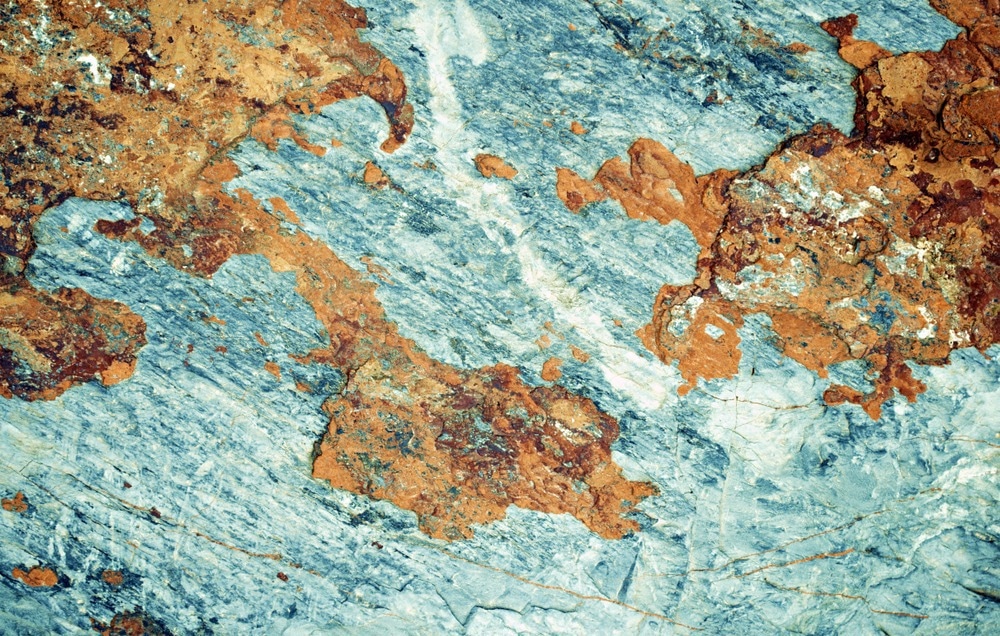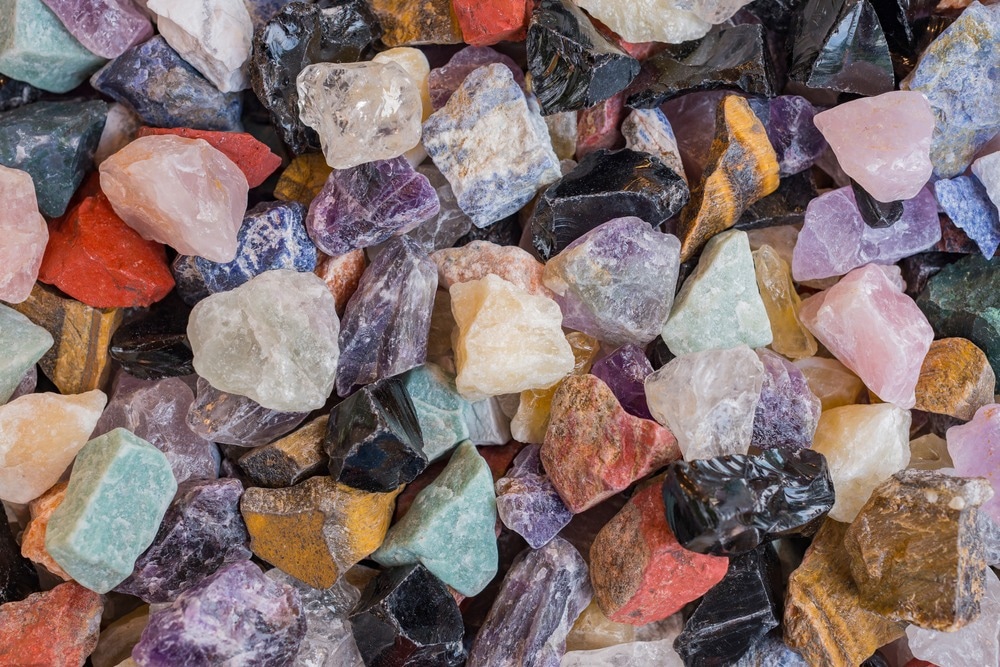Geochemistry aims to describe and understand the properties and behavior of Earth systems. By providing information on the atomic level of various materials, spectroscopy offers invaluable support in investigating the nature of geomaterials.

Image Credit: Elena Barbaros/Shutterstock.com
Since spectroscopy provides an understanding of the atomic-scale level, which ultimately influences the bulk macroscopic properties of a material, it becomes evident how the technique can play an essential role in geochemistry when characterizing gases, liquids, or solids – especially rocks and soils.
Advances and improvements in traditional techniques, in combination with the development of new ones, offer a vast number of spectroscopic methods available to geochemists, revealing information on the composition and structure of materials and dynamic properties.
For instance, Fourier transform infrared (FTIR) spectroscopy is a unique technique that allows the determination of structural water in anhydrous minerals or silicate glass. Such determination is difficult with other analytical techniques. With a pronounced dipole moment, the OH group is strongly IR active, and many OH-bearing minerals show signals in the very characteristic 2500-3700 cm–1 region.
Identifying Spatial Differences in Mineral Samples (with FTIR)
Another exciting application of FTIR spectroscopy in geochemistry is identifying spatial differences in mineral samples based on characteristic spectral signatures, as in a study conducted at the Aldegondabreen glacier (Svalbard, Norway).
Cryoconite samples were collected from twelve locations across the glacier and analyzed with FTIR spectroscopy. Most samples' spectra shared some common features associated with mica, a range of clays, and quartz (with a doublet peak at 778 cm-1 and 797 cm-1).
However, one sample showed a significantly different spectrum, particularly with peaks associated with dolomite (729 cm-1 and 882 cm-1), calcite (1436 cm-1), and organic matter (carbonyl group at 1816 cm-1). Samples nearer to the glacier's edge showed differences in peak intensities, with higher peaks in the main "silicate regions" (900–1200 cm-1, 650–800 cm-1, and 450–550 cm-1) suggesting greater concentrations of clays.
Raman Spectroscopy Applied to Mineralogy and Geochemistry
Raman spectroscopy is often complementary to FTIR, especially for the analysis of water-containing solutions. In addition, with proper calibration, Raman spectroscopy can provide information on the chemical composition of minerals such as olivines, pyroxenes, and tourmalines.
Since it is a non-destructive technique, Raman spectroscopy is ideal for analyzing jewels and gems, distinguishing fake materials, identifying natural and synthetic objects, and determining provenance.
From the spectral positions of Raman bands, it is possible to determine pressures inside diamond-anvil cells and estimate information on the primary formation conditions. Upon studying the Raman signature of solid molecular nitrogen in a cloudy, inclusion-rich diamond from Brazil, researchers established that the diamond had formed at approximately 22 GPa and 1640 °C, corresponding to circa 630 km below the Earth's surface.

Image Credit: Damian Pawlos/Shutterstock.com
Field Investigations with Portable X-Ray Fluorescence Spectroscopy
A spectroscopic technique that has been increasingly used in geochemistry over the last two decades is X-ray fluorescence (XRF). This is also due to the development of hand-held or portable X-ray fluorescence (pXRF).
Instruments have advanced from prototypes to being critical tools for field geochemical analyses. In fact, a strong advantage of pXRF in the field is that scientists can gain a real-time understanding of a field site, especially for mining and environmental applications, as well as being more cost-effective compared to classical laboratory analyses.
Most portable analyzers are based on 40 or 50 kV X-ray tubes and can analyze elements with medium to high atomic mass (i.e., K to Pb) at relatively low concentrations of a few mg/kg. However, there are some limitations with the analysis of lighter elements such as Mg, Al, and Si.
Laser-Induced Breakdown Spectroscopy (LIBS) as a Novel Geochemical Tool
Considering the need for analytical instrumentation for rapid analysis in the field and the capability of LIBS to analyze any sample in real-time, with almost no preparation, LIBS has great potential in routine geochemical applications.
Thanks to the rapid and simultaneous multielement analysis capabilities, LIBS is suitable for the on-site investigation of rocks, minerals, and soils. In addition, detection limits are in the range of 10 ppm or lower, and the analysis only requires a minimal amount of sample (nanograms or less).
Conversely to other techniques such as pXRF, LIBS is sensitive to light elements, namely H, Li, Be, B, and C. LIBS analysis can therefore be used to identify minerals containing light elements, such as spodumene (containing Li, Al, and Si), chrysoberyl (based on the presence of Be and Al) or homilite (showing B, Mg, and Si) depending on their respective spectra.
In one of the first investigations with LIBS, 34 silicate minerals from three different groups – inosilicates, phyllosilicates, and tectosilicates – were correctly classified with a commercial laboratory LIBS system.
Many other spectroscopic techniques not mentioned above have played – and still play – an essential role in the chemical analysis applied to geochemistry. The list includes X-ray diffraction (XRD) and variants of atomic absorption spectroscopy (AAS).
There is not a single approach that can fully characterize the samples under investigation. Often techniques are complementary to each other, and whether performed on-site or in laboratory settings, analyses with different methods should be conducted comprehensively.
Sources:
- Langford, H., Hodson, A. & Banwart, S. (2011). Using FTIR spectroscopy to characterise the soil mineralogy and geochemistry of cryoconite from Aldegondabreen glacier, Svalbard. Applied Geochemistry, 26, S206-S209.10.1016/j.apgeochem.2011.03.105
- Schmidt, C. & Nasdala, L. (2020). Applications of Raman Spectroscopy in Mineralogy and Geochemistry. Elements, 16, 99-104.10.2138/gselements.16.2.99
- Lemière, B. (2018). A review of pXRF (field portable X-ray fluorescence) applications for applied geochemistry. Journal of Geochemical Exploration, 188, 350-363.10.1016/j.gexplo.2018.02.006
- Harmon, R. S. & Senesi, G. S. (2021). Laser-Induced Breakdown Spectroscopy – A geochemical tool for the 21st century. Applied Geochemistry, 128, 104929.10.1016/j.apgeochem.2021.104929
Further Reading
Last Updated: Oct 28, 2022